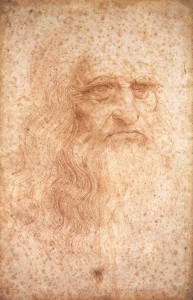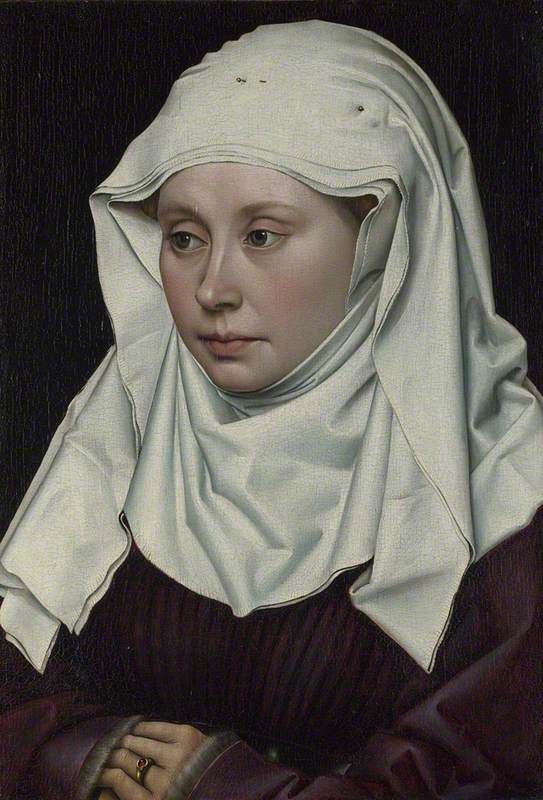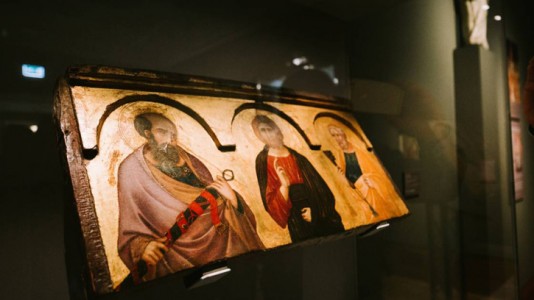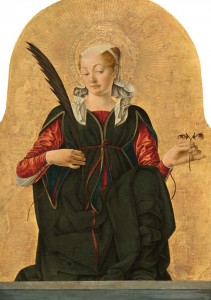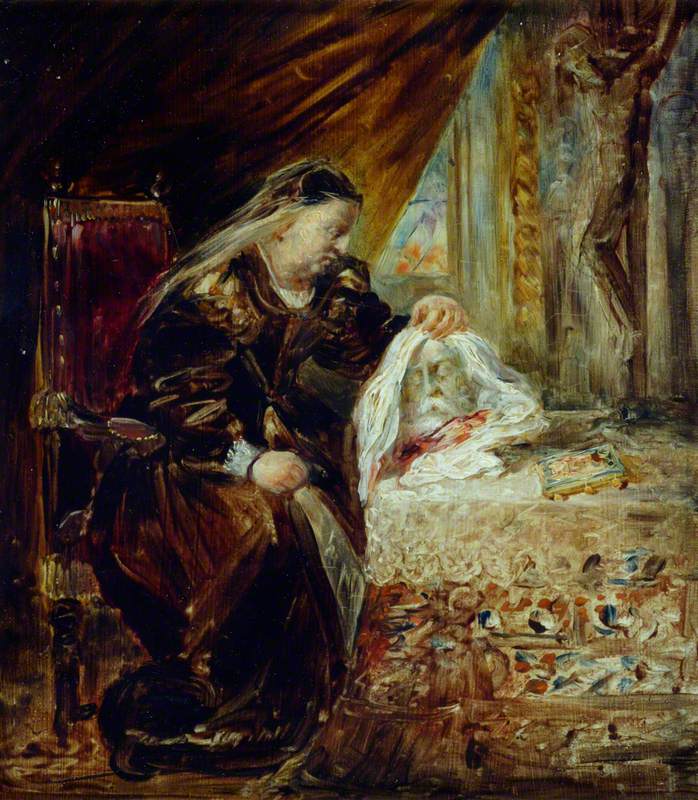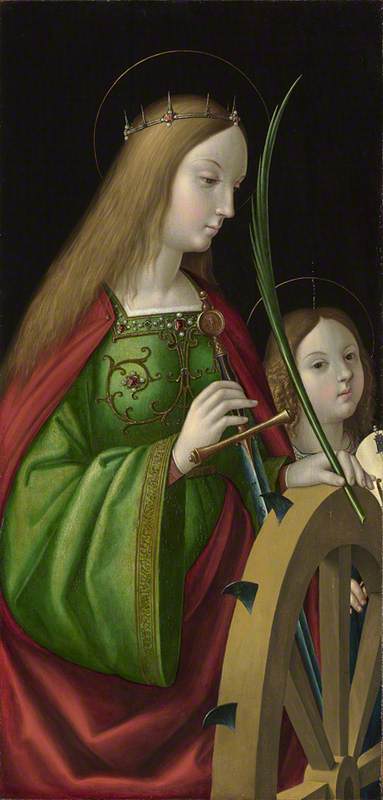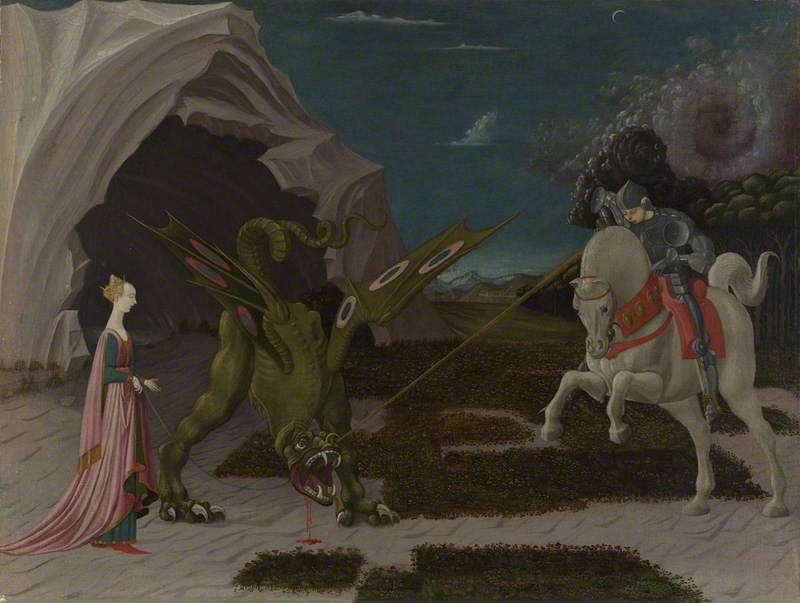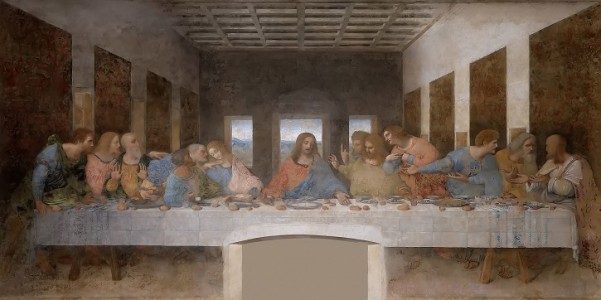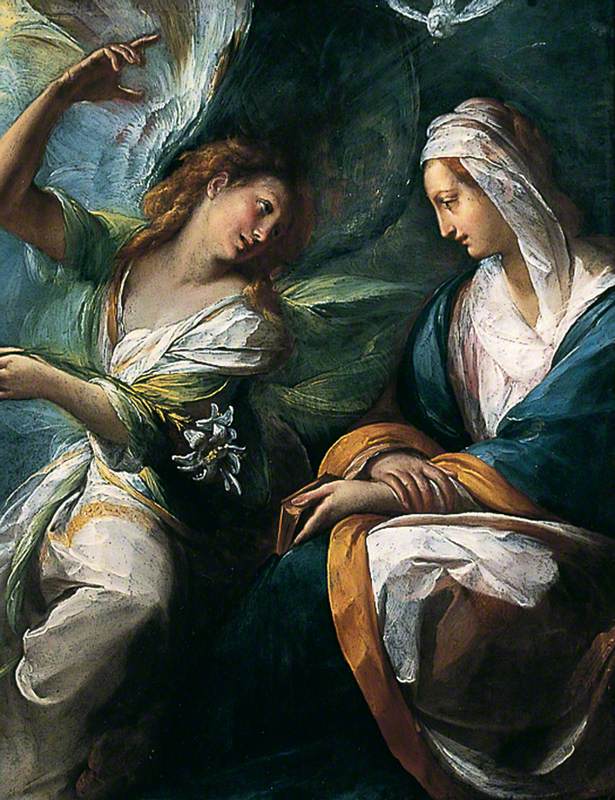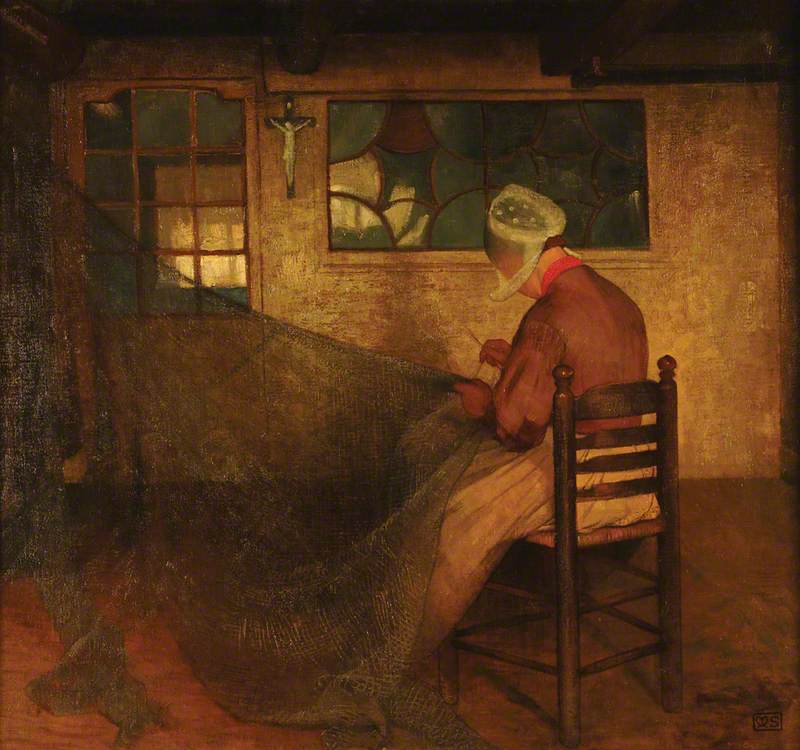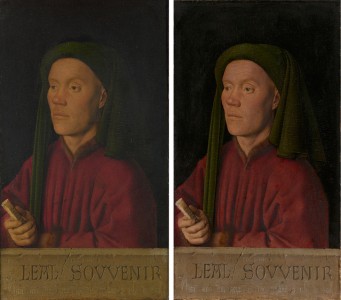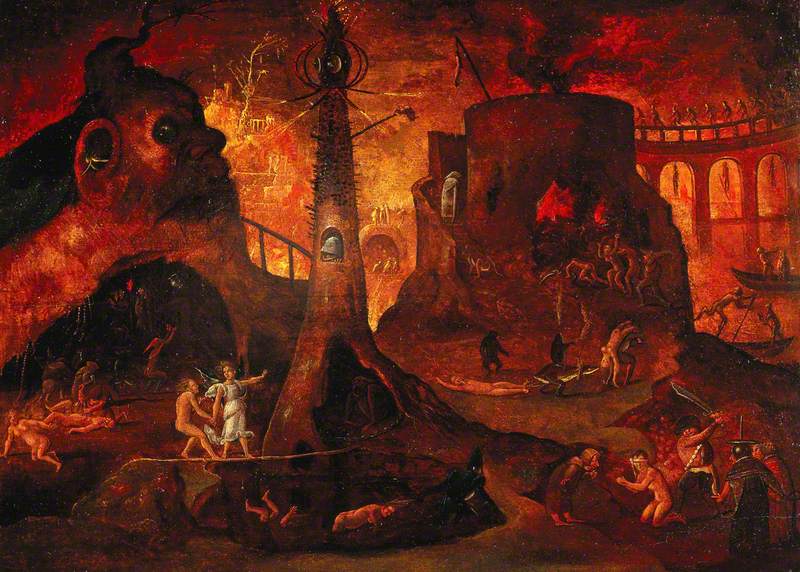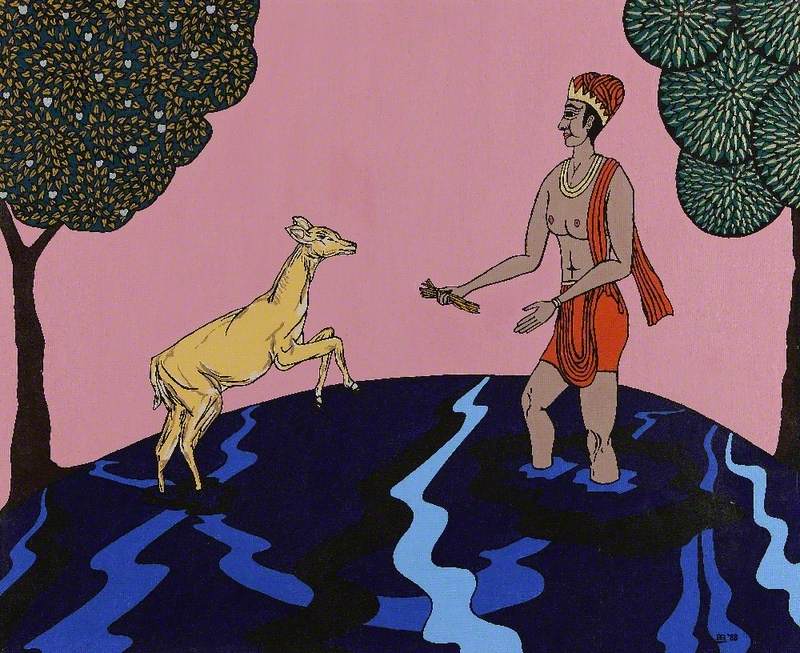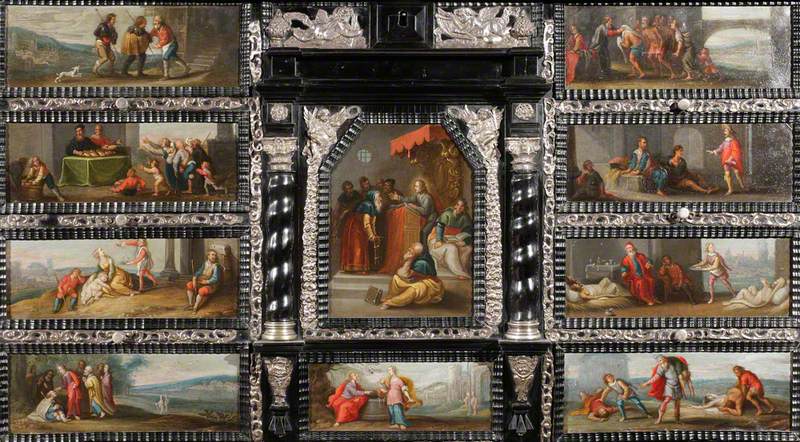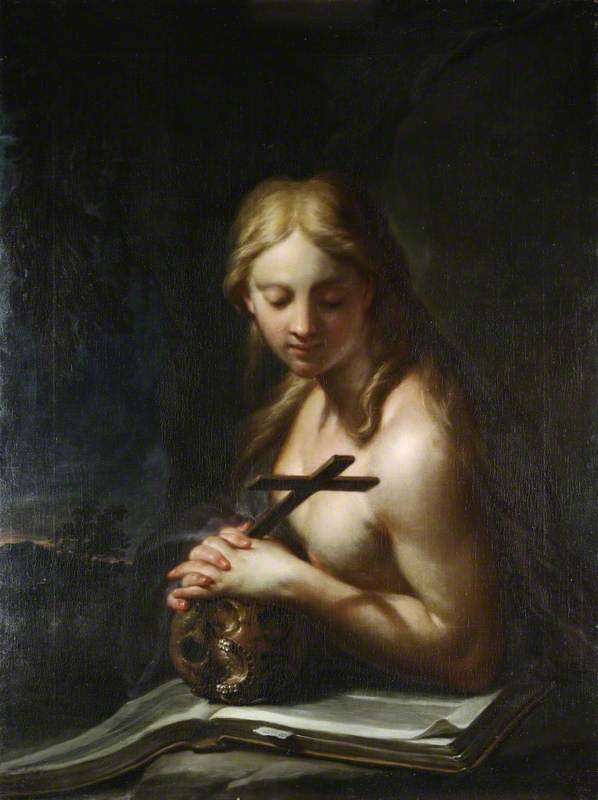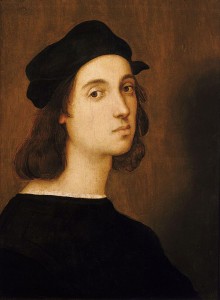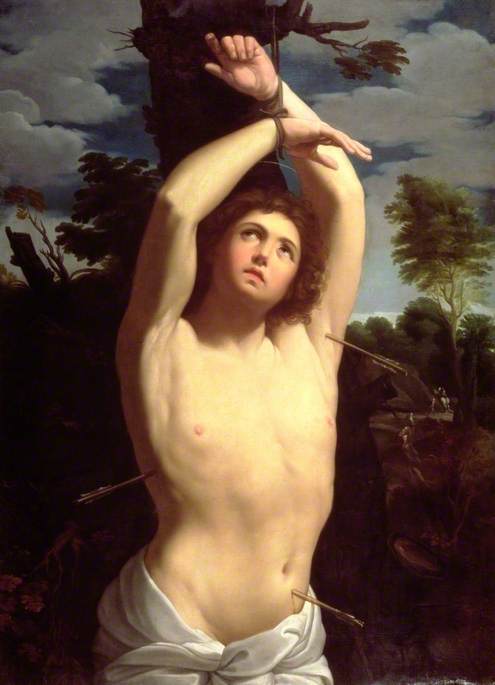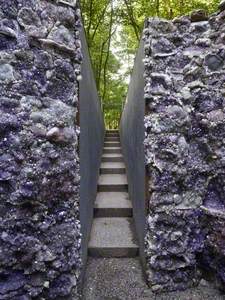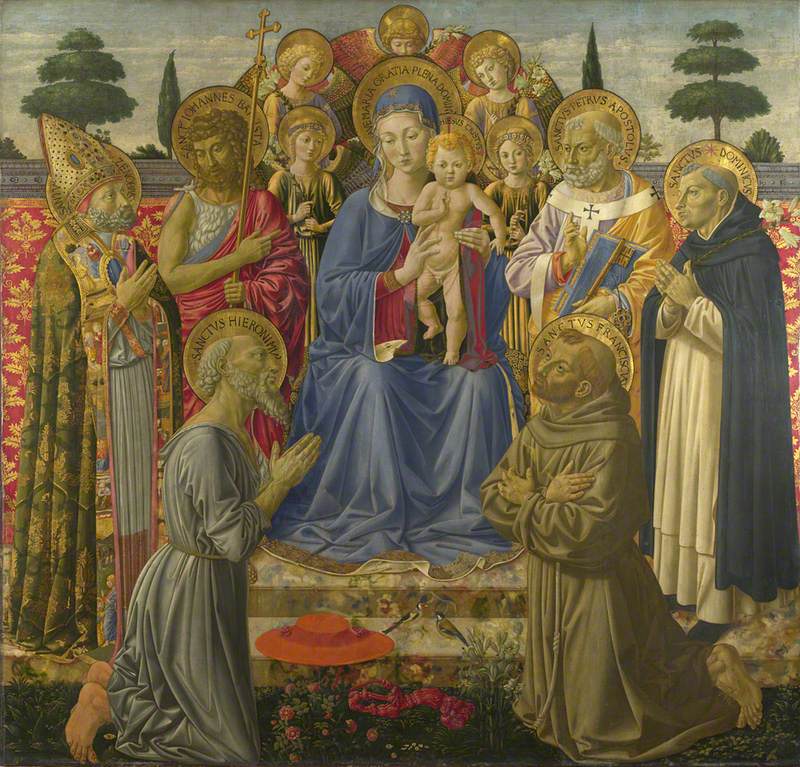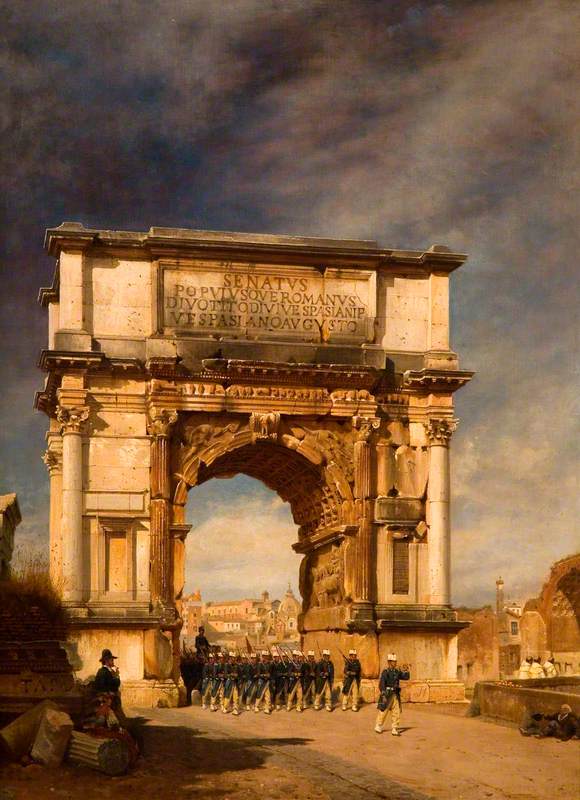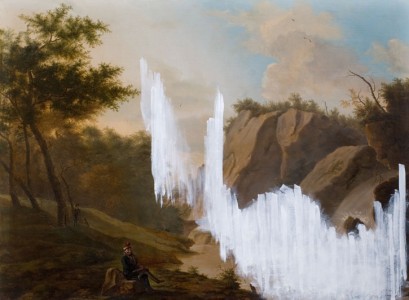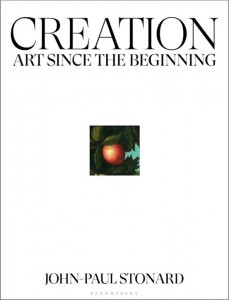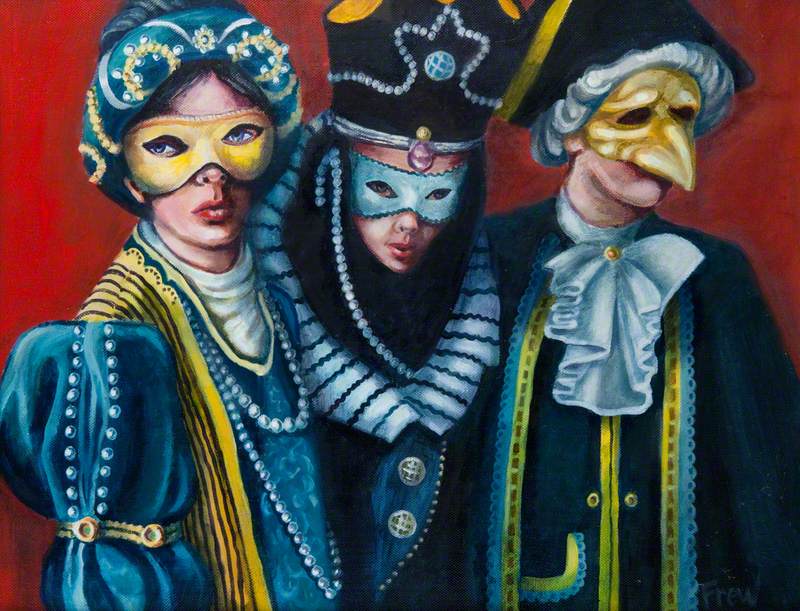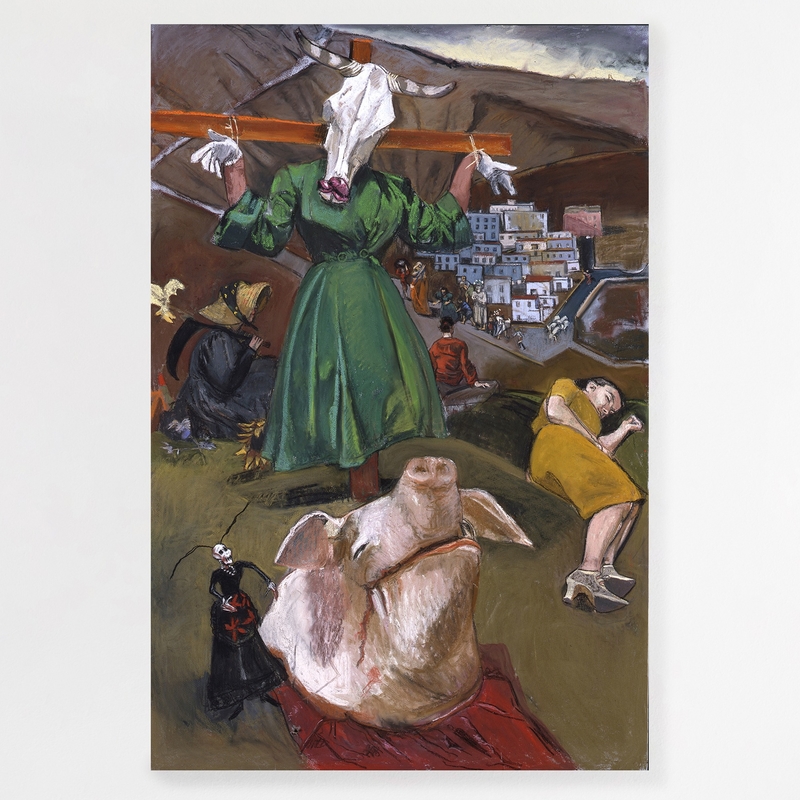Francesco Botticini's The Assumption of the Virgin has always posed a problem for The National Gallery in London. It is very big for a Renaissance panel painting and is in a very odd format. It measures 228.6 by 377.2 cm (7 ft 6 in by 12 ft 5 in). It is also very assertive visually, with its radiant tiers of supplicants, angels and saints, who bear witness to the coronation of the Virgin. Mary's mortal remains have been replaced in her tomb by pure white lilies, as witnessed by the bemused disciples.
The Assumption of the Virgin
probably about 1475-6
Francesco Botticini (1446–1497) 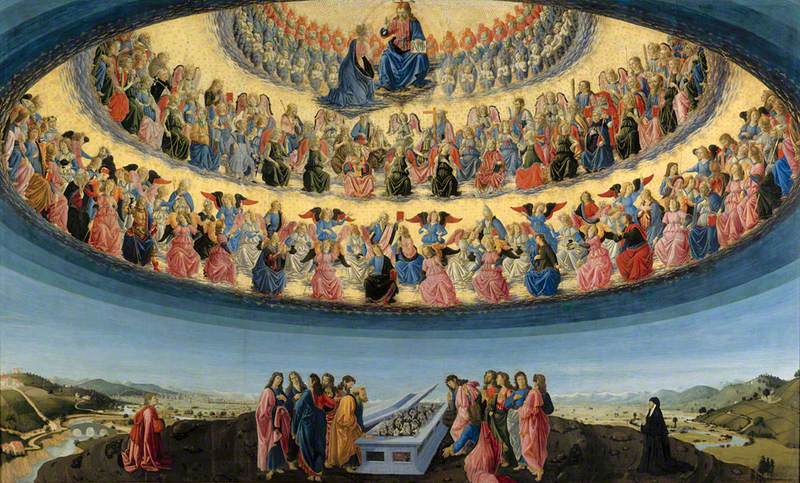
Botticini's masterpiece has for a long time hung dramatically at the top of the grand staircase in the Sainsbury Wing. But when we return to the gallery we will find it newly installed in Room 59, in company with other Florentine paintings of more orthodox formats.
If we sense something theatrical in the impact of the composition, we would not be mistaken. The nine orders of angels arranged in three tiers, culminating in red-winged seraphim, are arranged in a dome-like configuration, at the centre of which Mary is crowned by her Son.
The Assumption of the Virgin
(detail), c.1475–1476, tempera on wood by Francesco Botticini (1446–1498) 
The array of figures on cloud-platforms is set against the radiant light of the golden heavens, marked with a myriad of incised points of light. It vividly recalls great theatrical performances of sacred dramas in Florentine churches south of the Arno. Direct visual evidence of the huge spectaculars has not survived, but there is a rare description by a visiting Russian Bishop of an Annunciation performed in San Felice in Piazza. Amongst other 'marvellous' things he saw in 1439, Bishop Suzdal describes:
'a throne on which a man of majestic appearance is seated, dressed in a priestly robe with a crown on his head and the Gospel in his left hand, as God the Father is represented. He is surrounded by many children artfully arranged around him with 500 little oil lamps... There were [on the spheres of heaven] a thousand lit oil lamps... All this represented the seven heavens, the heavenly powers, and the inextinguishable angelic light.'
The staged heavenly throng was borne aloft on wooden platforms covered by cottonwool clouds. Concealed machinery ingeniously raised and lowered key actors in the drama. The aerial realms of the massive stage machines were collectively referred to as paradisi (paradises).
Dante and His Poem
1465, oil on canvas by Domenico di Michelino (1417–1491) 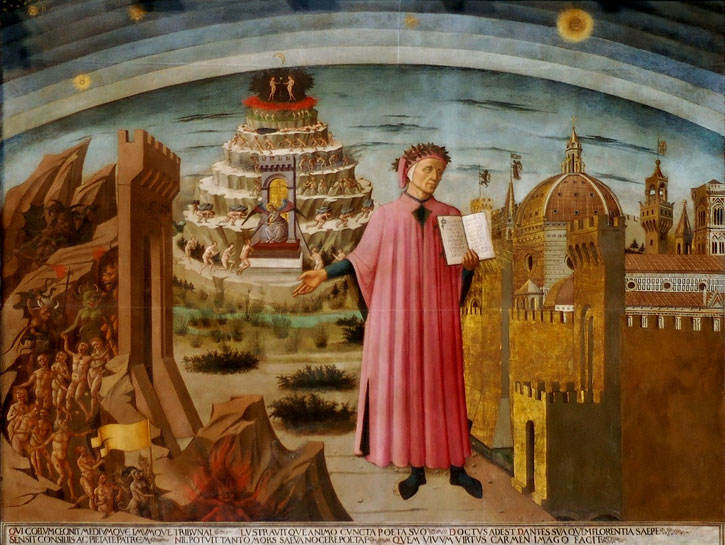
The reference, as no Florentine would have missed, is to Dante's Paradiso, the third canticle in his monumental Divina Commedia, written in the early years of the fourteenth century. Accompanied by the posthumous spirit of his beloved Beatrice, Dante journeys through the spheres of the planets to the ultimate heaven of the Empyrean, the place supposedly occupied by the element of fire and the dwelling-place of God. Here the celestial beings are made of pure light and Dante is repeatedly dazzled by blinding lights pitched at a level that mortals cannot bear – just as the spectators of the theatrical paradisi were dazzled by the glare of multitudinous lamps.
Such an extraordinary painting required a special act of patronage. It was commissioned in 1475 by Matteo Palmieri, a powerful Florentine citizen who was trained as an apothecary, and found fame as an author, politician and public servant. He kneels on the left, while his wife, Niccolosa, is on the right wearing the habit of a Benedictine nun. It was she who brought the project to completion after Matteo's death in 1477. Behind her husband is a distant view of the city.
The Assumption of the Virgin
(detail), c.1475–1476, tempera on wood by Francesco Botticini (1446–1498) 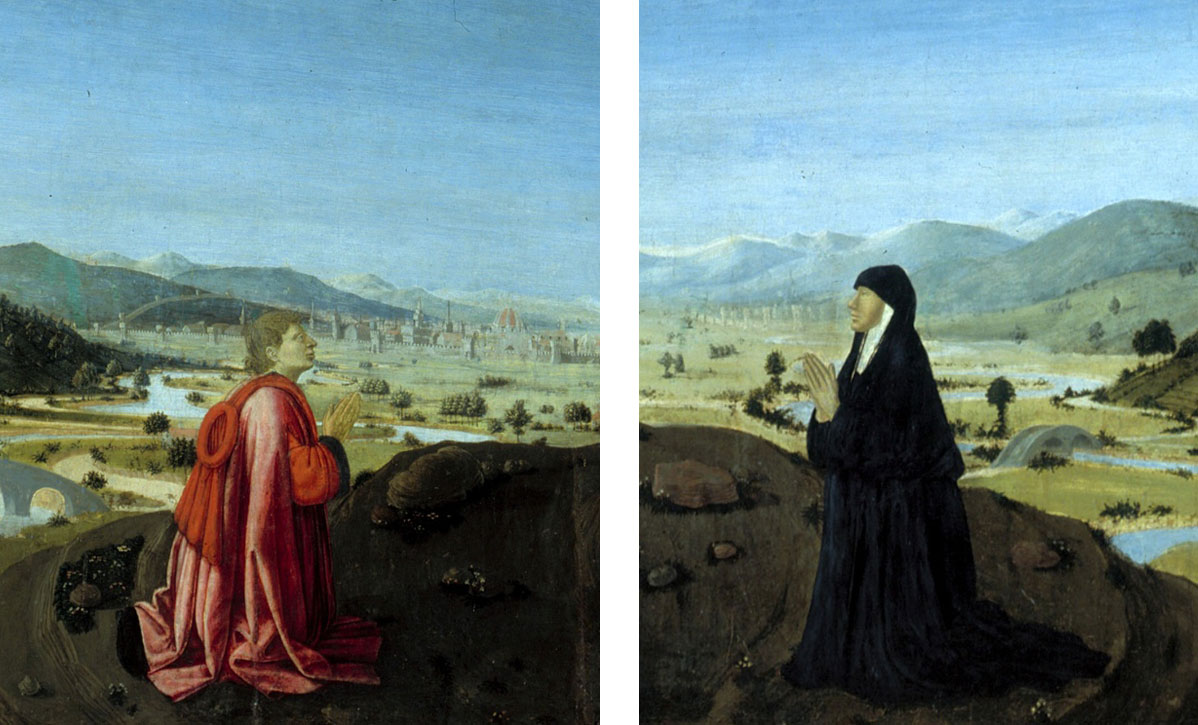
The wide panel occupied much of the end wall of the south transept in the major church of San Pier Maggiore, which was to be the location of Palmieri's tomb. It is more like a mural than an altarpiece. The church was demolished for structural reasons in the eighteenth century but has now been digitally reconstructed.
Palmieri was the subject of a very fine portrait by Antonio Rossellino, the Rembrandt of sculptors in the fifteenth century. The bust is somewhat weathered since it was displayed above the entrance door to his villa, in emulation of an ancient Roman custom. This public display of his presence is wholly consistent with his major treatise, Della Vita Civile (On Civic Life), in which he stressed the high worth of learned citizens who involve themselves in the life of their city.
Matteo Palmieri
1468, marble by Antonio Rossellino (1427–1479) 
This is not the end of the exceptional aspects of the painting. Palmieri had written an extraordinary sacred poem in three canticles, La Città di Vita (The City of Life), in close emulation of Dante's Commedia, with 100 chapters and rhyming units of three lines. He stipulated that the poem should not be made public until after his death. He told how a finite number of pre-existing souls are segregated into three groups: angelic ones devoted wholly to God, others whose devotion was compromised and a third group damned as demonic. The middle rank of ordinary souls in material bodies were granted three lives to make the right choice. Palmieri recounts the Dantesque journey of the soul across the planetary spheres, culminating in a luminous vision of the Virgin and Christ, and ultimately of God, accompanied by ranks of adoring angels.
Exceptionally, the heavenly strata in the painting are not just populated by angels, saints and biblical figures in rigid hierarchies. Interspersed with the fiery seraphim are four privileged beings in human bodies (possibly Saints Peter, John the Baptist, Paul and Mary Magdalene). There are non-divine characters in the lowest rings. Is the seated figure holding a book at the centre of the lowest ring identifiable as Palmieri himself?
The Assumption of the Virgin
(detail), c.1475–1476, tempera on wood by Francesco Botticini (1446–1498) 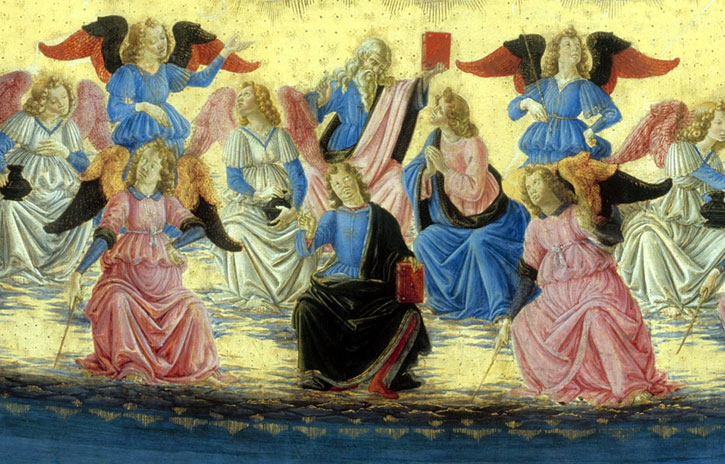
The selective mingling is consistent with Palmieri's strange theology of incarnated souls striving three times for salvation. The patron must have exercised tight control over the content of Botticini's painting. When his treatise eventually emerged after his death it was seen as promoting heretical notions and the painted portraits were defaced (before their reinstatement).
Botticini is now understandably overshadowed by Sandro Botticelli, whose paintings are in the preceding room, but his complex spectacle of the tiers of heavenly beings is at least as exceptional and complex as the latter's Mystic Nativity in the same gallery.
Martin Kemp, art historian and author of Visions of Heaven: Dante and the Art of the Divine, published by Lund Humphries


